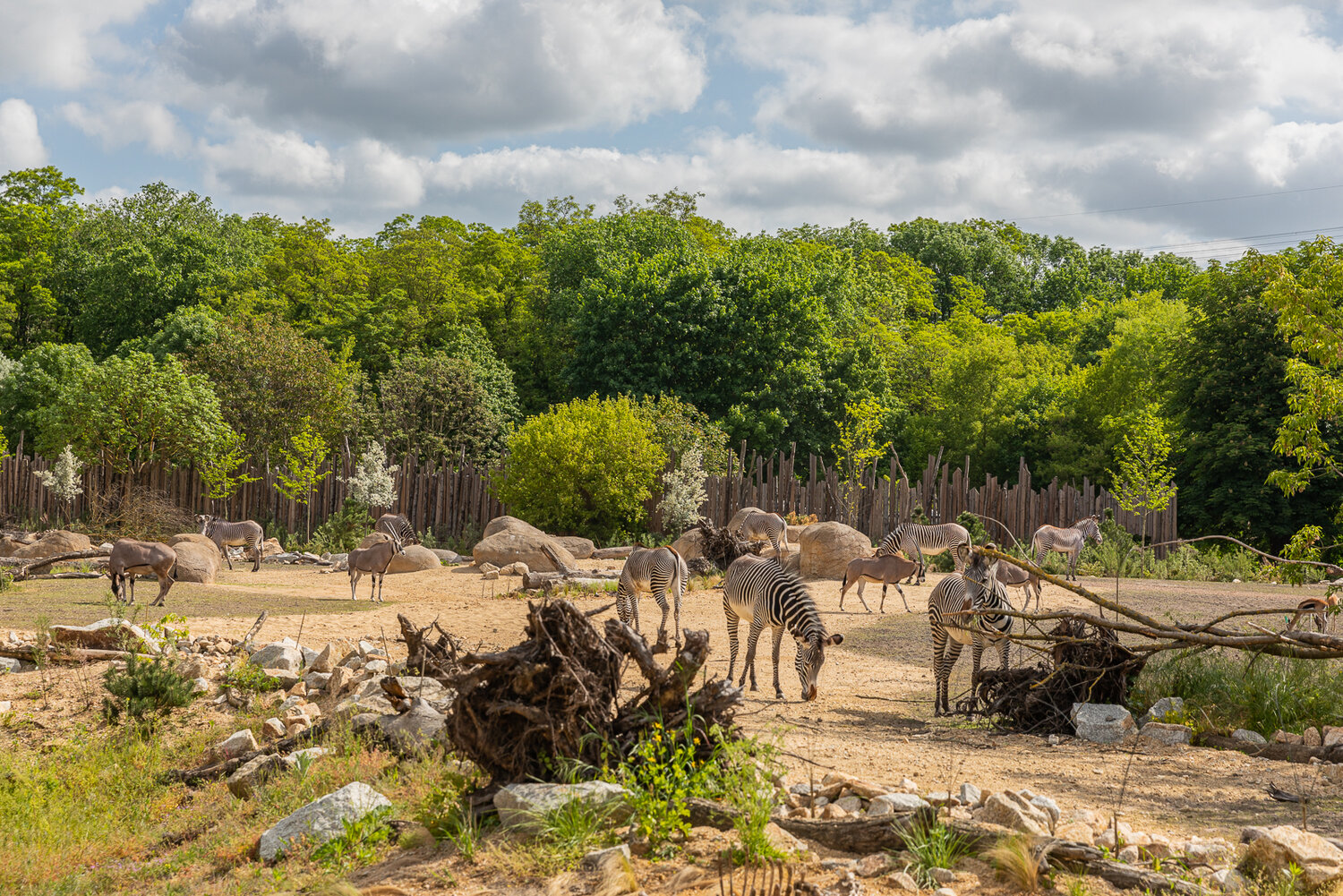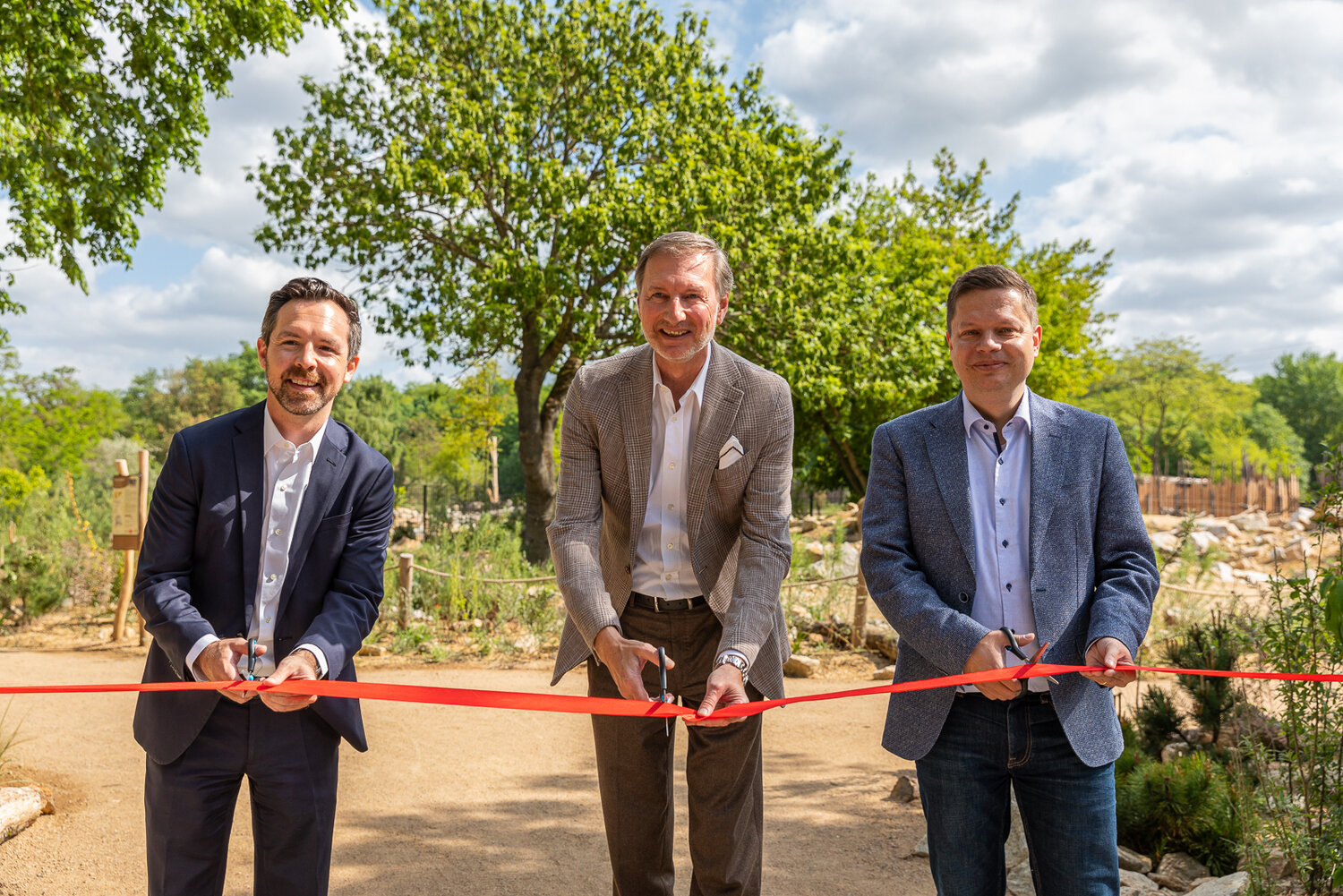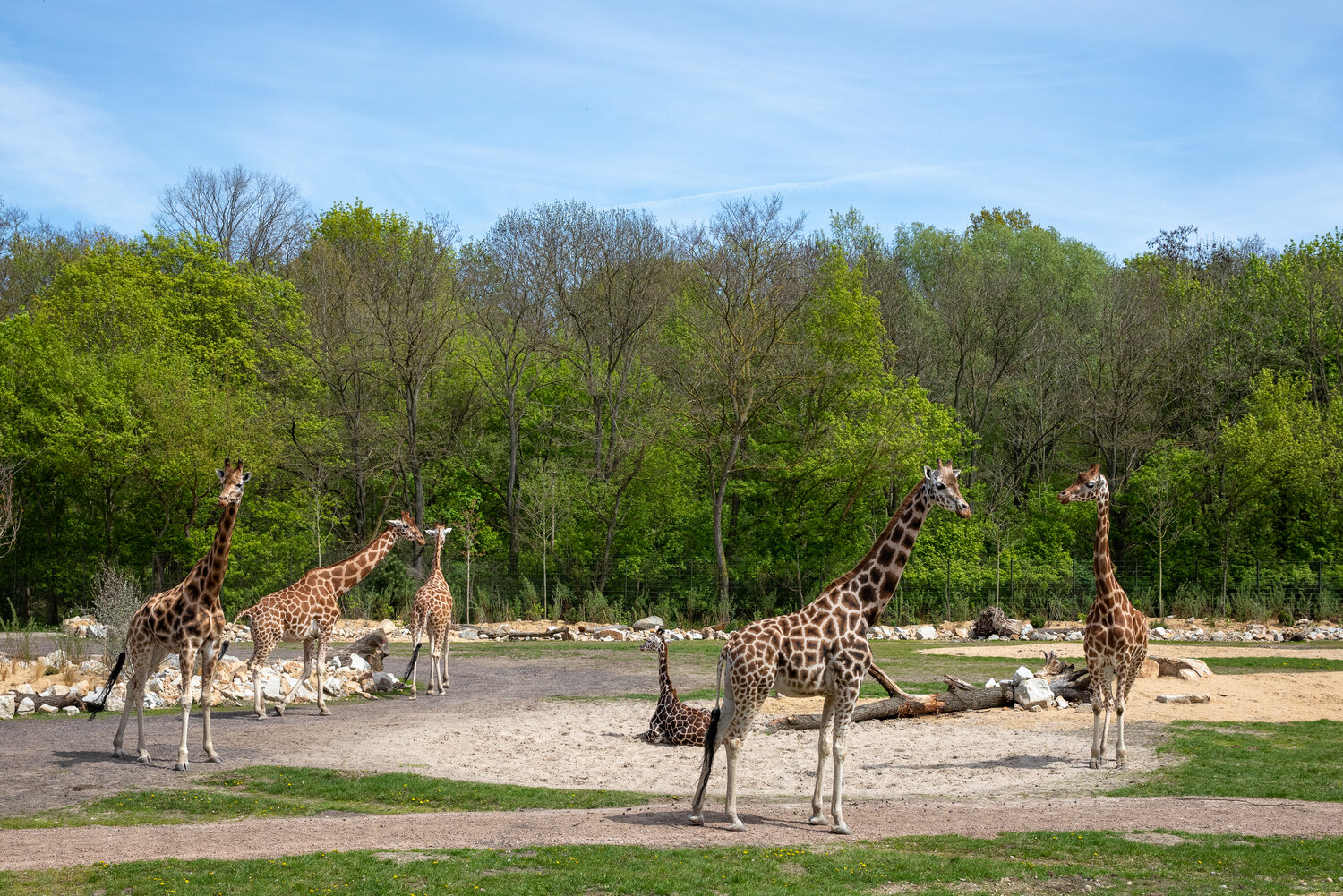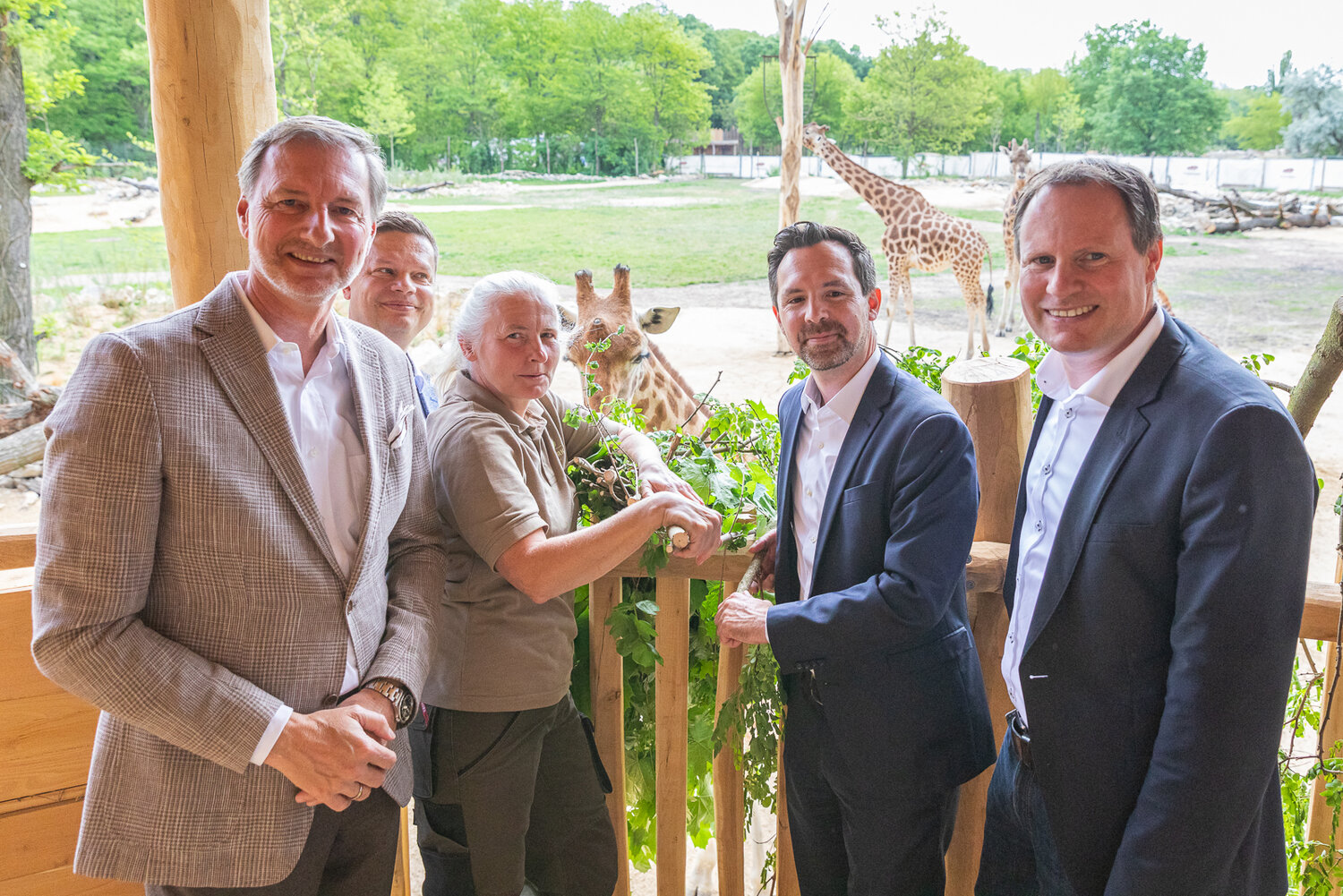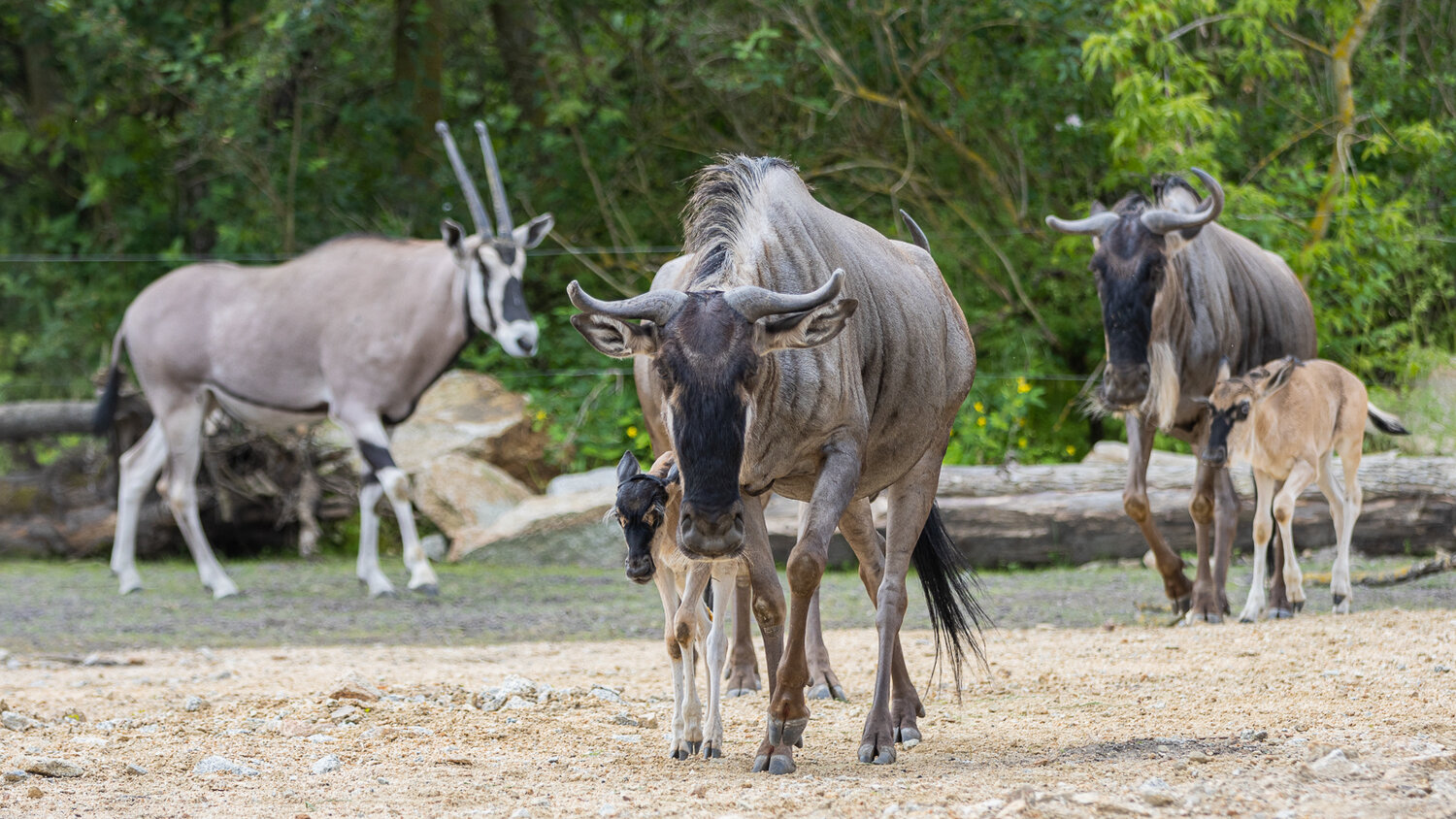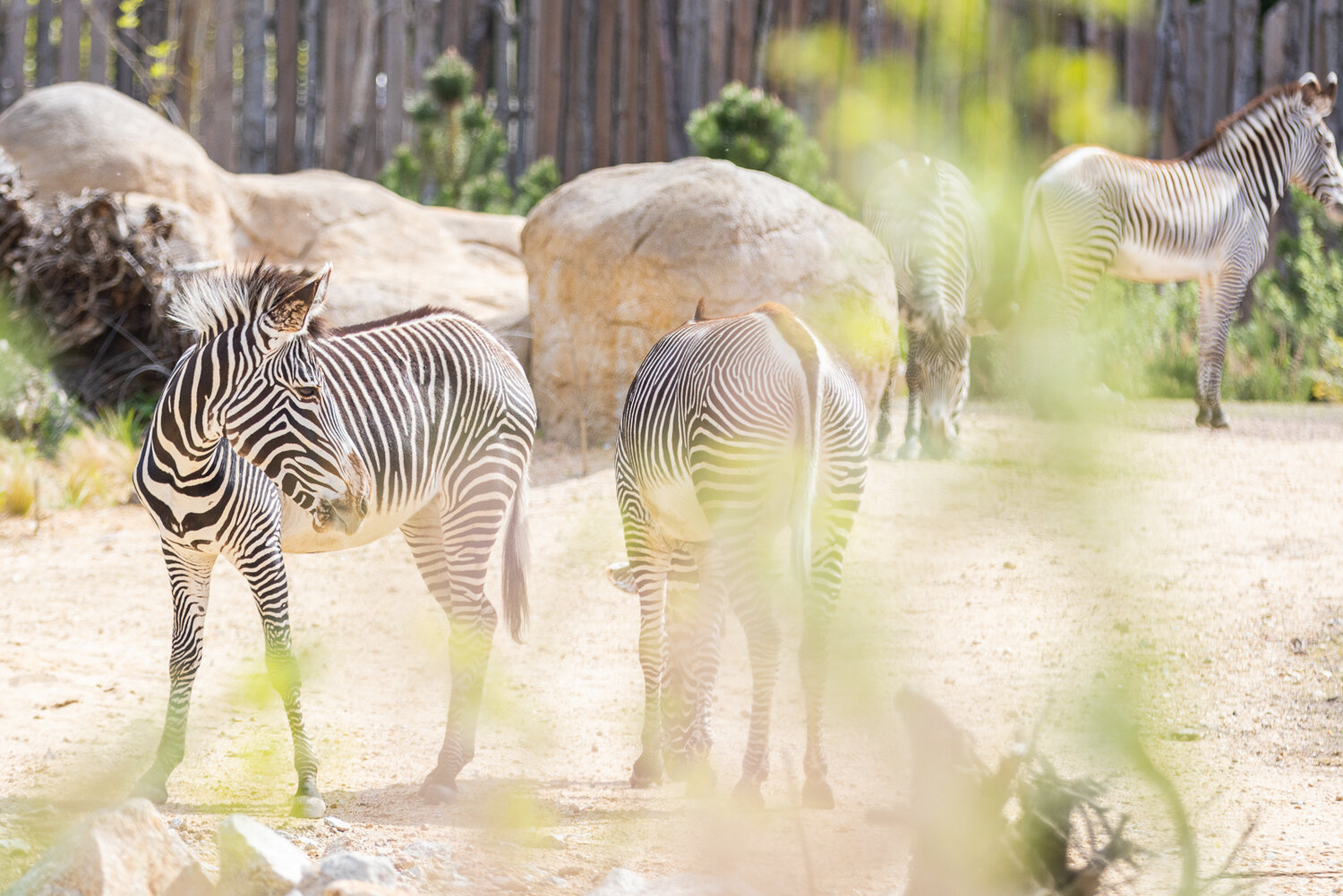Around 15 percent of the Earth’s surface is covered by savannahs. These tropical and subtropical plains are one of the planet’s most important habitats. From 26 May, visitors to Tierpark Berlin will be able to gain fascinating insights into the East African savannah and its incredible animal inhabitants.
Herds of Grévy’s zebras, white-bearded wildebeest and Thomson’s gazelles roam through the approximately 40,000 m² landscape. Meanwhile, great white pelicans dip their beaks in the waterhole, curious ostriches eye their new neighbours, and majestic giraffes carefully pluck leaves from high branches with their long tongues. “Bringing together so many animals from different species was an exciting task but also an enormous logistical challenge,” reports curator Markus Klamt. “The best proof that the animals are already feeling safe and happy in their new shared home comes from the presence of two healthy wildebeest calves – the very first babies in the Tierpark’s African Savannah.” The wildebeest were born on 9 and 15 May, before the new attraction was open to the public. One particularly special feature of the Savannah is the 120-metre-long Giraffe Trail. Here, visitors walk along a raised wooden walkway – crossing an adventurous suspension bridge if they choose – up to a viewing platform where they can encounter the herd of graceful giraffes at eye level.
Informative signs ensure there is something new to discover and learn at every corner of the African Savannah: Why do zebras have stripes? Why do millions of wildebeest embark on a long journey every year? How does a giraffe researcher spend her day out in the field? An interactive exhibition provides deeper insights into the savannah as a habitat and makes visitors more aware of the importance of biodiversity. And visitors can apply their newly acquired knowledge – for example, about the varying patterns on a giraffe’s coat – directly as they gaze out over the African landscape. “Tierpark Berlin reaches a substantial proportion of the public: this spring alone, we counted more than 17,000 guests per day,” says Zoo and Tierpark Director Dr Andreas Knieriem. “I would like to express my heartfelt thanks to the entire team for their tireless commitment and excellent teamwork,” he adds.
The costs for construction of the African Savannah amounted to around €7 million. The Berlin Senate Department of Finance provided €5.6 million of that sum, while a further €1.2 million came from the Joint Federal Government/Länder Scheme for the Improvement of Regional Economic Structures (GRW), via the Senate Department for the Economy, Energy and Enterprises (SenWiEnBe).
“As modern zoological institutions, Zoo and Tierpark Berlin have the task of raising awareness about animals and their habitats and motivating people to protect them,” says SenWiEnBe Senator Franziska Giffey. She goes on to praise the new African Savannah and Giraffe Trail as exciting new Tierpark highlights: “Here, visitors of all ages can experience the unique diversity of African wildlife – from the great white pelican to the Rothschild’s giraffe. This fantastic new feature has made the Tierpark even more attractive as a day-trip destination for families in Berlin and Brandenburg, as well as for tourists from further afield.” And, Giffey explains, while they enjoy their day out visitors can gain a deeper understanding of the remarkable diversity of life on our planet. “While our Tierpark is an important space for environmental education, species conservation and research, it also plays a major role in the city’s tourism sector and economic development. That is why we are supporting additional upcoming investments at the Tierpark with around €53 million euros from the GRW funds.” Currently, the African Savannah is still divided by the construction site for the new Elephant House, which is an extensive redesign of the former Pachyderm House. Once that structure is complete, the giraffes, marabou storks, wildebeest, zebras and antelopes will live alongside one another in a single, contiguous area.
With the opening of its African Savannah, Tierpark Berlin has reached a new milestone on its journey to become a modern “geo-zoo”. For the past nine years, the 160-hectare animal park, originally founded in 1955, has been undergoing various measures to create more natural habitats that group animals into geographical zones. This layout provides greater insight into the natural habitats of individual species – including their unique characteristics, their interactions, and the threats facing them. Zoo and Tierpark Berlin also have their own species protection programme, Berlin World Wild, which collaborates with around 35 different conservation projects around the world. For many years, Berlin’s zoos have been working closely with the Wild Nature Institute in Tanzania, which is dedicated to researching and protecting giraffes in the wild.
As a long-standing supporter of Tierpark Berlin and its conservation efforts, the giraffes’ sponsor, housing association HOWOGE, is also delighted about the opening of the wonderful new home for its sponsored animals: “We don’t only care about the welfare of our giraffes but also about the sustainable protection of all animals and natural spaces. That is why we are very happy to support Tierpark Berlin in its educational and species protection work,” says HOWOGE Managing Director Ulrich Schiller.
Another special challenge for the African Savannah project was the replacement of one of the city’s largest mosaics, “Evolution of the Proboscideans”. Measuring 4.42 metres high and 17.53 metres wide, this is one of the most important works of art by Berlin artist Ortraud Lerch (1939-2013). It is also one of the last artworks created in the German Democratic Republic. For three decades, this impressive mosaic graced the interior of the 7,000 m² Pachyderm House. With the redesign of the building, which will give its animal residents much more space, the mosaic would no longer have been visible from the visitor area. To ensure this important piece of cultural heritage remains on display to the public, it was professionally extracted by construction company Müller-Bohrtechnik of Wittenberg. Now, restorer Joana Pomm and her team are carefully piecing the mosaic back together at a central location between the hyena and giraffe habitats. This elaborate restoration was financed with GRW funds as part of the Elephant House redesign. The planning for the project was generously supported by the foundation Stiftung Hauptstadtzoos.
Facts and figures
Animals of the African Savannah
- 9 Rothschild’s giraffes
- 4 East African beisa oryxes
- 9 Grevy’s zebras
- 10 Thomson’s gazelles
- 6 Eastern white-bearded wildebeest
- 4 Hartmann’s mountain zebras
- 3 North African ostriches
- 11 great white pelicans
- 2 marabou storks
The newly opened part of the African Savannah is divided into two sub-projects, each with different participants and funding sources.
Key data for the Giraffe Trail construction project:
- Project funding of €1.26 million from the Joint Federal Government/Länder Scheme for the Improvement of Regional Economic Structures (GRW)
- Project started: Q1/2019
- Construction started: July 2022
- Project participants, planning:
- Overall planning: Henchion+Reuter architects
- Planning of load-bearing structure: Eisat GmbH
- Fire prevention: Ilko-M. Mauruschat
- Health and safety coordination: BHR Ingenieurgesellschaft mbH
- Project management: IBPM
- Project participants, construction
- Overall project management: Krahnstöver & Wolf
- Subcontractor, steel construction: Kratzer Metallbau GmbH
Key data for the African Savannah construction project:
- Project funding of €5.56 million from the Senate Department for Finance
- Project started: Q1/2019
- Construction started: Jan. 2022
- Project participants, planning:
- Overall planning: Rehwaldt Landscape Architects
- Planning for load-bearing structure: Eisat GmbH
- Health and safety coordination: BHR Ingenieurgesellschaft mbH
- Soil survey: BOLAB
- Surveying: Vermessung Liedtke
- Water technology: Irriproject
- Project participants, construction:
- Overall project management: Krahnstöver & Wolf
- Subcontractor, water technology: Spowatec GmbH
